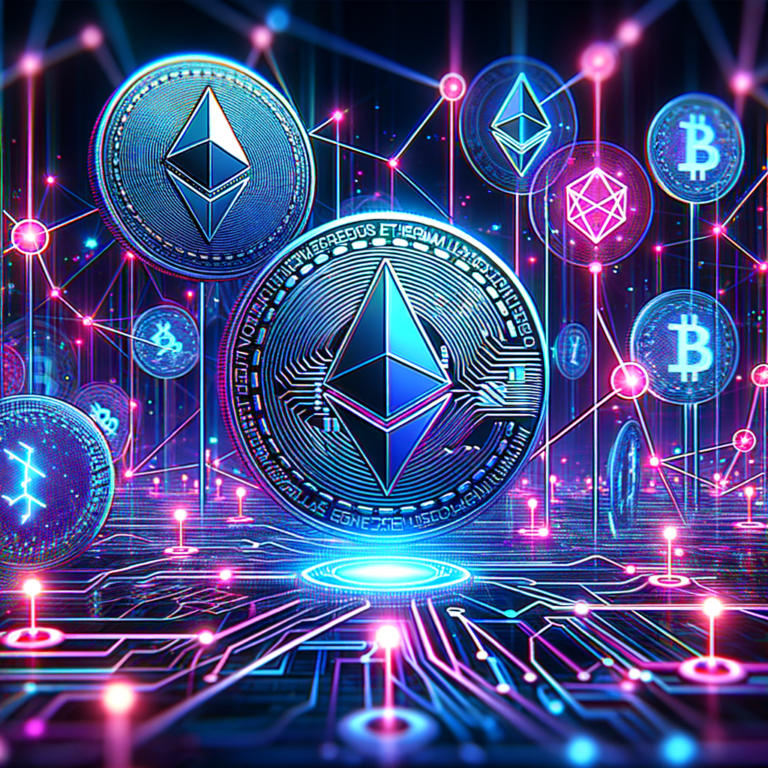Top Ethereum NFT Marketplaces Revealed
Navigating the diverse landscape of Ethereum NFT marketplaces, each platform offers unique advantages tailored to different needs, whether one is a digital artist, an avid collector, or a speculative trader. With features ranging from wide varieties of digital assets for collection to exclusive artistic works, these marketplaces enable users to buy, sell, and explore NFTs securely on the Ethereum platform. Key contenders like OpenSea, Rarible, Foundation, and others differ by fees, supported tokens, and specialties, providing ample options depending on your specific requirements.
Exploring Top Ethereum NFT Marketplaces
OpenSea: The Giant in NFT Transactions
As the largest digital marketplace for crypto art and other NFTs, OpenSea offers thousands of artifacts across multiple categories such as art, domain names, virtual worlds, and trading cards. The platform supports both Ethereum and Polygon networks, making it accessible to a broad audience. Drawing a large base of users, it offers a competitive 2.5% service fee on all sales, catering to newcomers and seasoned traders alike.
Rarible: Democratic Art Trading
A unique aspect of Rarible is its decentralized governance system, which allows its community to vote on platform upgrades and project submissions. Built on Ethereum, it supports the ERC-721 and ERC-1155 standards and charges a 2.5% service fee. Its dedication to creator rights and democratic participation makes it an attractive choice for artists and collectors passionate about community-driven projects.
SuperRare: The Social Platform for Exclusive Art
SuperRare offers an exclusive, curated environment where collectors can find limited edition digital artwork. Operating with a focus on art exclusivity, this platform supports Ethereum’s ERC-721 tokens and leverages a substantial commission structure with 15% on primary sales and 10% on secondary sales. SuperRare appeals particularly to artists and collectors looking for high-quality, scarce digital art.
Foundation: Community-Powered Art Trading
Foundation provides a marketplace that emphasizes community involvement and artist empowerment. It supports ERC-721 tokens and is widely appreciated for its sleek interface and emphasis on digital creativity. Offering a lower commission rate of 15% on primary sales and 5% on secondary sales, Foundation stands out as a platform committed to creators.
Mintable: Ease of Use and Accessibility
For those new to NFTs and looking for an easy entry point, Mintable offers a user-friendly experience, supporting both ERC-721 and ERC-1155 tokens. This platform enables users to mint, buy, and sell NFTs, charging a straightforward 2.5% service fee. Mintable’s approachable design and features cater to beginners and casual users.
KnownOrigin: Exclusive Digital Art Auctions
KnownOrigin specializes in unique, limited edition digital artwork, providing artists a platform to create, sell, and auction their creations while supporting ERC-721 tokens. With a 15% fee on primary sales and 10% on secondary sales, KnownOrigin appeals to artists looking for a dedicated audience and art collectors seeking one-of-a-kind pieces.
BakerySwap: Cross-Chain Functionality and Lower Fees
While not based on Ethereum, BakerySwap offers compatibility through bridges, supporting ERC-71 and ERC-1155 tokens. It utilizes the Binance Smart Chain for transactions, providing a lower fee structure at 1% and benefits for BAKE stakers. This platform is suitable for users looking for versatility in blockchain networks and lower transaction costs.
Choosing the Right Ethereum NFT Marketplace
The optimal choice of an Ethereum NFT marketplace largely depends on user priorities such as fee structure, type of artwork, and platform governance. For extensive collections and ease of use, OpenSea and Rarible offer robust solutions. Conversely, platforms like SuperRare and Foundation cater to niche markets that desire collectible, exclusive digital art. Meanwhile, beginners or those valuing simplicity might prefer Mintable due to its straightforward interface.
Ultimately, with varied fees, supported tokens, and specializations, these platforms collectively advance the dynamics of digital artistry and investing, encouraging users to engage with digital assets in a way that best suits their artistic and economic preferences.

